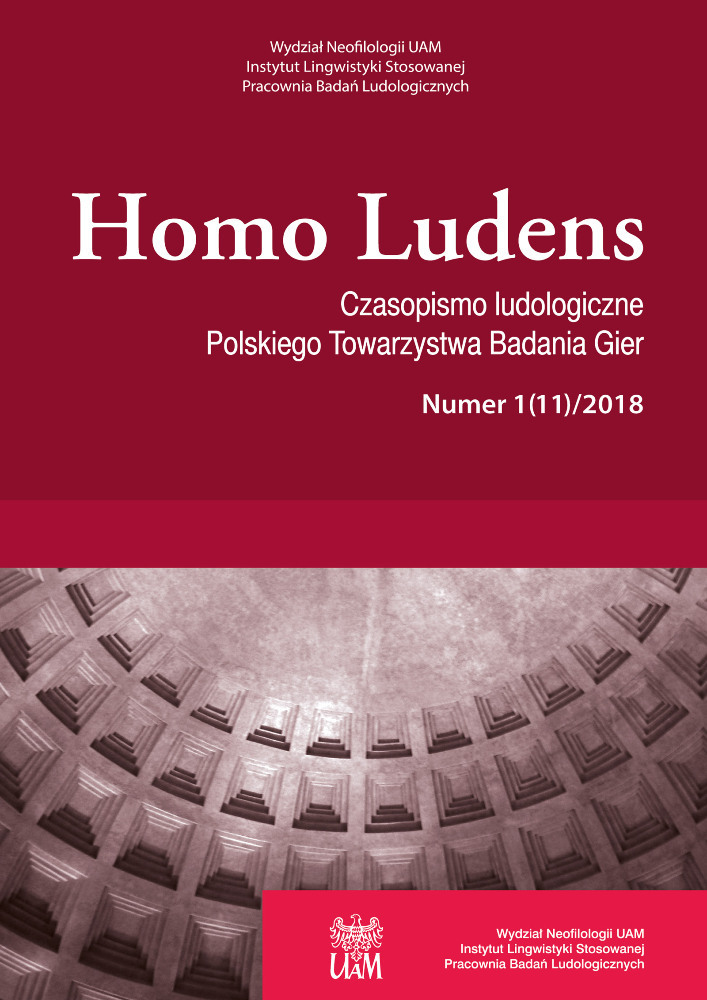Abstract
In this paper we present the results of an experimental study of bot identification in a multiplayer online game. Our game of choice for the study was World of Warships. The tested group consisted of 30 subjects (15 experienced players and 15 players without significant experience in this domain). Subjects played the game against bots or against human players. The main hypothesis for the study was that the more immersed a player was, the less accurate s/he will identify the opposing players (as human players or as bots). On the basis of the results, this hypothesis cannot be confirmed.
References
Block, N. (1995). The mind as the software of the brain. W: E. Smith, D. Osherson, (red.), An Invitation to Cognitive Science – Thinking (pp. 377–425). London: The MIT Press.
Brown, E., Cairns, P. (2004). A grounded investigation of game immersion. CHI ‘04 Extended Abstracts on Human Factors in Computing Systems (pp. 1297–1300).
Calleja, G. (September 2007). Revising Immersion: A Conceptual Model for the Analysis of Digital Game Involvement. In Situated Play, Proceedings of DiGRA 2007 Conference (pp. 83–90).
Ermi, L., & Mäyrä, F. (2005). Fundamental components of the gameplay experience: Analysing immersion. In S. de Castell, J. Jenson (eds.), Worlds in play: International perspectives on digital games research (pp. 37–53). New York, Bern, Berlin, Bruxelles, Frankfurt am Main, Oxford, Wien: Peter Lang.
Garner, R. (2009). The Turing Hub as a Standard for Turing Test Interfaces. In R. Epstein, G. Roberts, and G. Beber (eds.), Parsing the Turing Test: Philosophical and Methodological Issues in the Quest for the Thinking Computer (pp. 319–324). Springer Publishing Company.
Jennett, C., Cox, A., Cairns, P., Dhoparee, S., Epps, A., Tijs, T., Walton, A. (2008). Measuring and defining the experience of immersion in games. International Journal of Human-Computer Studies, 66(9), 641–661.
Loebner, H. (2009). How to Hold a Turing Test Contest. In R. Epstein, G. Roberts, G. Beber (eds.), Parsing the Turing Test: Philosophical and Methodological Issues in the Quest for the Thinking Computer (pp. 173–180). Springer Publishing Company.
Łupkowski, P. (2011), A Formal Approach to Exploring the Interrogator’s Perspective in the Turing Test. Logic and Logical Philosophy, 20(1–2), 139–158.
Mauldin, M. L. (1994), Chatterbots, TinyMuds, and the Turing test: Entering the Loebner Prize Competition. In Proceedings of the Twelfth National Conference on Artificial Intelligence (Vol. 1), AAAI ‘94, American Association for Artificial Intelligence, Menlo Park, CA, USA, pp. 16–21.
Mauldin, M. L. (2009). Going undercover: Passing as human; artificial interest: A step on the road to AI. In G. B. R. Epstein, G. Roberts (eds.), Parsing the Turing Test: Philosophical and Methodological Issues in the Quest for the Thinking Computer (pp. 413–430). Springer Publishing Company.
Strojny, P., Strojna, A. (2014). Kwestionariusz immersji – polska adaptacja i empiryczna weryfikacja narzędzia. Homo Ludens, 1(6), 187–198.
Turing, A. M. (1950). Computing machinery and intelligence. Mind, LIX(236), 443–455.

